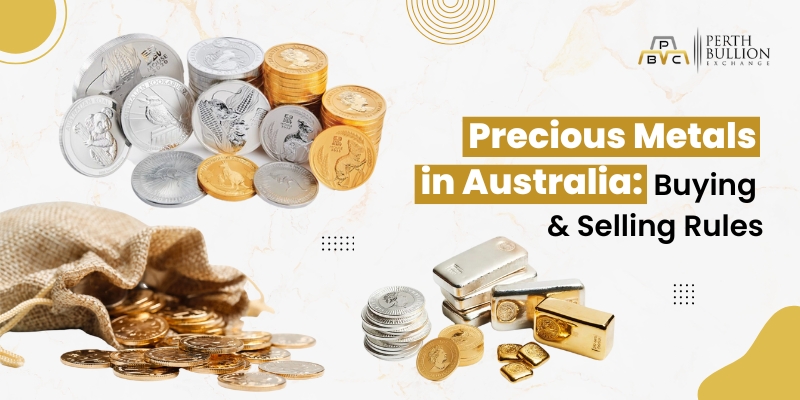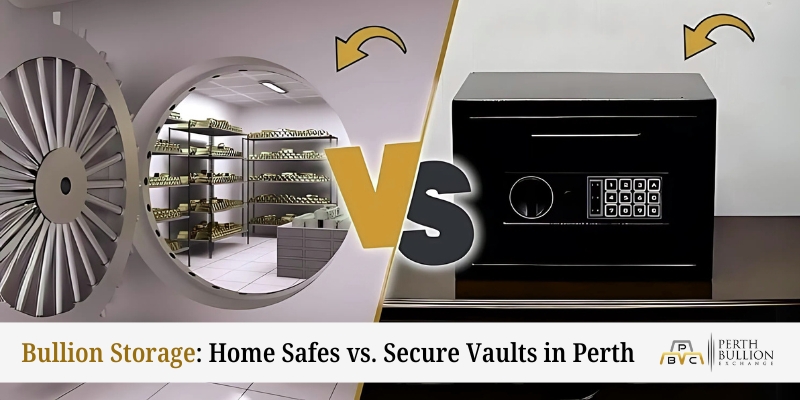Gold or Silver: Choosing the Best Precious Metal Investment in Australia
Throughout the centuries, precious metals earned a reputation as a means to secure wealth in times of uncertainty. Gold and silver are popular among investors in Australia, who also make a few investments in property and shares as a way of diversification.
However, when we consider the choice, a question always presents itself: which is the better investment, gold or silver? The answer is not simple. It is based on your budget, risk appetite, and investment objectives. We will examine the advantages and variations of both to help you make an informed choice.
1. Understanding Gold and Silver as Investments
Gold and silver have always been reliable methods of holding money and wealth. Central banks and nations have been using gold, a supposed form of real money, to support their currencies. Silver is also a store of value, but with greater connotations towards industrial and technological applications.
The major distinction is the demand. Gold is mainly desired for jewellery, investment, and reserves, but silver is torn between investment demand and industrial use. Both metals are very liquid in Australia. Gold and silver are easily tradable throughout Australia via various authorised dealers and mints.
2. Price Volatility and Market Trends
Gold has established a reputation for being steady during economic recessions. During periods of inflation, currency fluctuations, or stock market crashes, Australians often turn to gold as a haven for their wealth.
Silver, on the other hand, is more volatile. It is more likely to exhibit a steep price movement, which then has a higher chance of yielding good returns in the short term, but with increased risk.
3. Access and Affordability
The cost of gold puts an increased entry barrier for new investors. Even small bullion bars or coins are a considerable investment when compared to silver. Often viewed as a more affordable option, investing in silver offers an entry point for beginners to build a portfolio.
Australians have the option of bullion bars, coins, exchange-traded funds (ETFs), or allocated storage. Silver is especially attractive to first-time investors due to its accessibility and low volatility.
4. Industrial and Technological Demand
Silver cannot be denied in contemporary industries. Renewable energy, electronics, and medical technology provide more than half of the world's demand for silver. In Australia, the shift to green energy, particularly solar energy, can also contribute to silver demand.
Gold is much less valuable industrially, however. Its main applications are jewellery, investment, and the central bank reserves. This distinction implies that the price of silver is more closely tied to the growth of the global economy, while the prices of gold tend to increase when the economy declines.
5. Storage and Practical Considerations
When investing in physical metals, practicality is a significant concern. Because of its lower price per ounce, silver requires more storage space to maintain a dollar value than gold. As an illustration, it is observed that a significant amount of space is required to store $5,000 or $50,000 in silver, compared to storing the same amount of gold.
Security and insurance also play a significant role. Many bullion services and licensed facilities in Australia offer secure storage solutions for keeping and trading bullion.
6. Tax Implications in Australia
Before investing, it is essential to understand taxation. The gains of selling bullion in Australia may be subject to Capital Gains Tax (CGT).
Bullion gold at investment-grade purity is usually exempt from Goods and Services Tax (GST). However, silver is liable to GST, unless it is purchased through certain investment vehicles. This renders tax planning a significant consideration in determining what metal fits your strategy.
7. Long-Term vs. Short-Term Investment Goals
Gold should be considered as a long-term hedge against wealth. Its predictability qualifies it as a good investment in retirement packages, serving as a risk cover against inflation and economic fluctuations.
Silver, on the other hand, attracts investors who seek growth opportunities or are willing to take on greater short-term risk. It is volatile and can be used to make money, but it also has a greater potential for downward movement. Those with short-term trading objectives in Australia tend to prefer engaging in silver trading, whereas those who prefer to invest in the long term tend to invest in gold.
8. Diversification: Why Not Both?
To most Australians, the best approach is not to choose between the two but to have a blend of both. Gold offers stability, and silver provides low cost and exposure to the industrial growth trend.
A diversified portfolio can include both metals, with gold for its long-term stability and silver for its growth potential. The combination of the two will enable investors to diversify against risks and capitalise on the strengths of each metal.
Conclusion
Both gold and silver bring value to an investment portfolio, but in different ways. Gold provides stability and preservation of long-term wealth, while silver offers affordability and growth potential in various industries.
Your financial objectives, budget, and risk tolerance will determine the optimal option. Gold can be a good bet for retirement-orientated Australians, and silver can offer the prospect of a more active or speculative approach.
Either way, to make sure your investment in precious metals is safe, lawful, and meets your specifications, you may use a reputable Australian bullion dealer. Contact Perth Bullion Exchange today to get all the assistance that you need!




Comments
Post a Comment